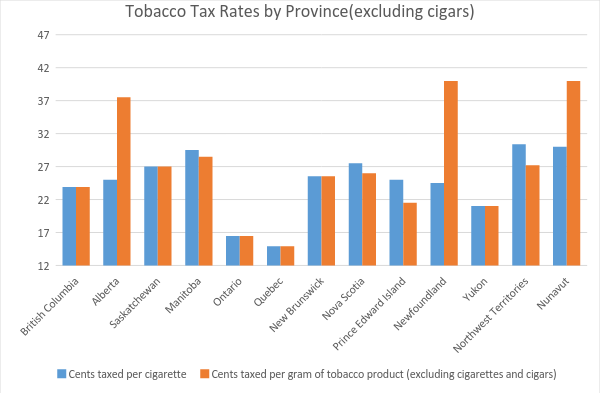
Fair value is best determined by what someone would pay for it, or its market price. The other is by estimating its future benefits to whomever owns it. When fixed/tangible assets (machinery, land, buildings) are purchased and used, they decrease in value over time. So, for example, if a new company purchases a forklift for $30,000 to use in their logging businesses, it will not be worth the same amount five or ten years later. Still, the asset needs to be accounted for on the company’s balance sheet.
CORRECTING and REPLACING Traeger Announces Second … – StreetInsider.com
CORRECTING and REPLACING Traeger Announces Second ….
Posted: Tue, 08 Aug 2023 10:03:53 GMT [source]
For example, your company has an intellectual property of $50,000 in value. Amortization, in general, is writing off a part of its value every year. Assume that you have a ten-year loan of $10,000 that you pay back monthly.
What is amortization in accounting and how does it affect taxable income?
They are amortized over their remaining years, typically by the straight line method. Financial assets which meet the criteria and definition of amortized costs such as a bond, which carries a cash flow stream defined by their coupon rate. But over the bond’s term period, the interest rate can differ as the market differs. If the market rate goes up and is higher than the noted rate, the bond price amortization meaning in accounting with example in the market is lower than its overall maturity value. The only example in which the market price and the bond’s price would be the same is when the interest rate in the market and the face value rate are the same, but this is a rare occasion that this occurs. There are a few requirements any discount or premiums arise when a financial assets carry amortized costs using an interest rate method.
- These assets benefit the company for many future years, so it would be improper to expense them immediately when they are purchase.
- If you make an expense that’s not included in your balance sheet, it will be trouble later during reconciliation.
- In accounting, amortization is conceptually similar to the depreciation of a plant asset or the depletion of a natural resource.
- In the example above, the loan is paid on a monthly basis over ten years.
- But depreciation is used to measure the value of tangible assets.
- So, back to our question of how the music company will amortize the copyrights.
If an intangible asset has an indefinite lifespan, it cannot be amortized (e.g., goodwill). A loan is amortized by determining the monthly payment due over the term of the loan. Under GAAP, for book purposes, any startup costs are expensed as part of the P&L; they are not capitalized into an intangible asset. Intangible assets that are outside this IRS category are amortized over differing useful lives, depending on their nature. For example, computer software that’s readily available for purchase by the general public is not considered a Section 197 intangible, and the IRS suggests amortizing it over a useful life of 36 months.
Why is amortization in accounting important?
In order to avoid owing more money later, it is important to avoid over-borrowing and to pay off your debts as quickly as possible. Accelerated amortization was permitted in the United States during World War II and extended after the war to encourage business to expand productive facilities that would serve the national defense. In the 1950s, accelerated amortization encouraged the expansion of export and new product industries and stimulated modernization in Canada, western European nations, and Japan.

Amortization in accounting is the process of expending an asset’s value over the period of its useful life in your balance sheet. So, the cost required to procure or manage the asset is recorded in the expense sheet rather than the income statement. By decreasing the assets’ value, you thereby reduce the taxable income. Calculating and maintaining supporting amortization schedules for both book and tax purposes can be complicated. Using accounting software to manage intangible asset inventory and perform these calculations will make the process simpler for your finance team and limit the potential for error. Record amortization expenses on the income statement under a line item called “depreciation and amortization.” Debit the amortization expense to increase the asset account and reduce revenue.
AccountingTools
Accumulated amortization is the cumulative amount of overall expenses written off against any intangible asset. In balance sheet terms, this is the sum of everything recorded on the debit side related to the intangible asset. Amortization in accounting also sets guidelines to handle intangible assets effectively. It’s often neglected as it involves manual calculations and complicated formulas.
The AZEK Company Announces Third Quarter Fiscal 2023 Results … – StreetInsider.com
The AZEK Company Announces Third Quarter Fiscal 2023 Results ….
Posted: Tue, 08 Aug 2023 20:36:20 GMT [source]
Smart companies are keen on making accurate expense projections. They also want to reduce their tax liability and increase their retained earnings. That is only possible if you count every single expense, direct or indirect. If the repayment period is five years, then you will pay $1M each year. There is a rate of interest of 5% too, which is $50k every year.
What can be amortized?
Over time, after the series of payments, the borrower gradually reduces the outstanding principal. If an intangible asset has an unlimited life, then it is still subject to a periodic impairment test, which may result in a reduction of its book value. For example, if your annual interest rate is 3%, then your monthly interest rate will be 0.25% (0.03 annual interest rate ÷ 12 months). You’ll also multiply the number of years in your loan term by 12.

Negative amortization is when the size of a debt increases with each payment, even if you pay on time. This happens because the interest on the loan is greater than the amount of each payment. Negative amortization is particularly dangerous with credit cards, whose interest rates can be as high as 20% or even 30%.
During any accounting exercise, you must evaluate the values of these assets — every year. It can be your brand value, R&D inventions, business secrets, or intellectual properties you own. With the above information, use the amortization expense formula to find the journal entry amount. Residual value is the amount the asset will be worth after you’re done using it.
It is hard to write in numerical terms the value of intangible assets, especially something like goodwill that doesn’t have a practical use. Amortization does not relate to some intangible assets, such as goodwill. You must use depreciation to allocate the cost of tangible items over time. Likewise, you must use amortization to spread the cost of an intangible asset out in your books. Amortizing lets you write off the cost of an item over the duration of the asset’s estimated useful life.
- However, there is a key difference in amortization vs. depreciation.
- The assets are unique from physical fixed assets because they represent an idea, contract, or legal right instead of a physical piece of property.
- To avoid the missing cost record being perceived as fraud, amortization values must be formally recorded.
- However, amortized loans are popular with both lenders and recipients because they are designed to be paid off entirely within a certain amount of time.
Amortized loans are also beneficial in that there is always a principal component in each payment, so that the outstanding balance of the loan is reduced incrementally over time. Such expense is called depreciation or, for exhaustible natural resources, depletion. Some assets, such as property that is abandoned or lost in a catastrophe, may continue to be carried among the firm’s assets until their extinction is achieved by gradual amortization. Interest costs are always highest at the beginning because the outstanding balance or principle outstanding is at its largest amount.
Amortization can refer to the process of paying off debt over time in regular installments of interest and principal sufficient to repay the loan in full by its maturity date. When a copyright’s value on the books exceeds its fair value, it is considered impaired and must be written down to its current value. Two of the purchased copyrighted songs have had little action in the way of airplay or interest from streaming services. The music company will write down their value from $1,000 to $100 at the end of the year.

This is especially true when comparing depreciation to the amortization of a loan. The IRS has schedules that dictate the total number of years in which to expense tangible and intangible assets for tax purposes. A higher percentage of the flat monthly payment goes toward interest early in the loan, but with each subsequent payment, a greater percentage of it goes toward the loan’s principal. First, amortization is used in the process of paying off debt through regular principal and interest payments over time.
